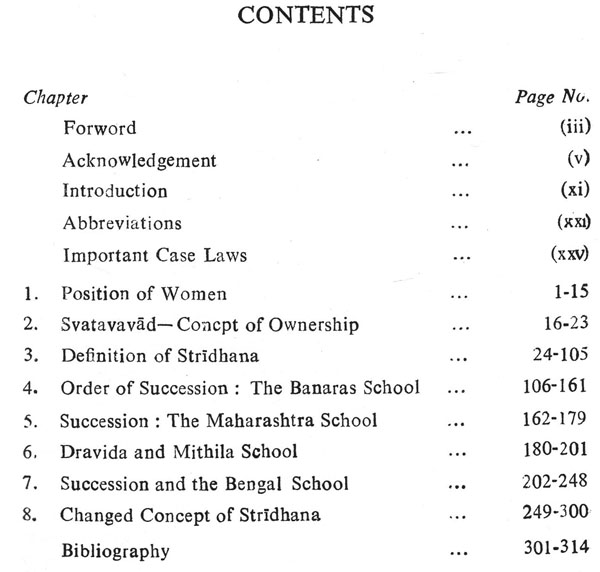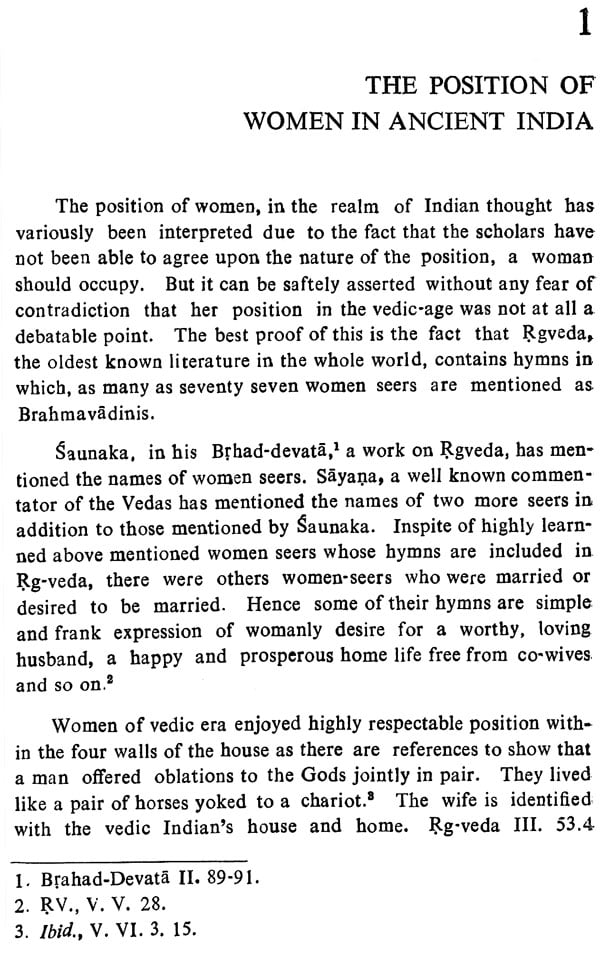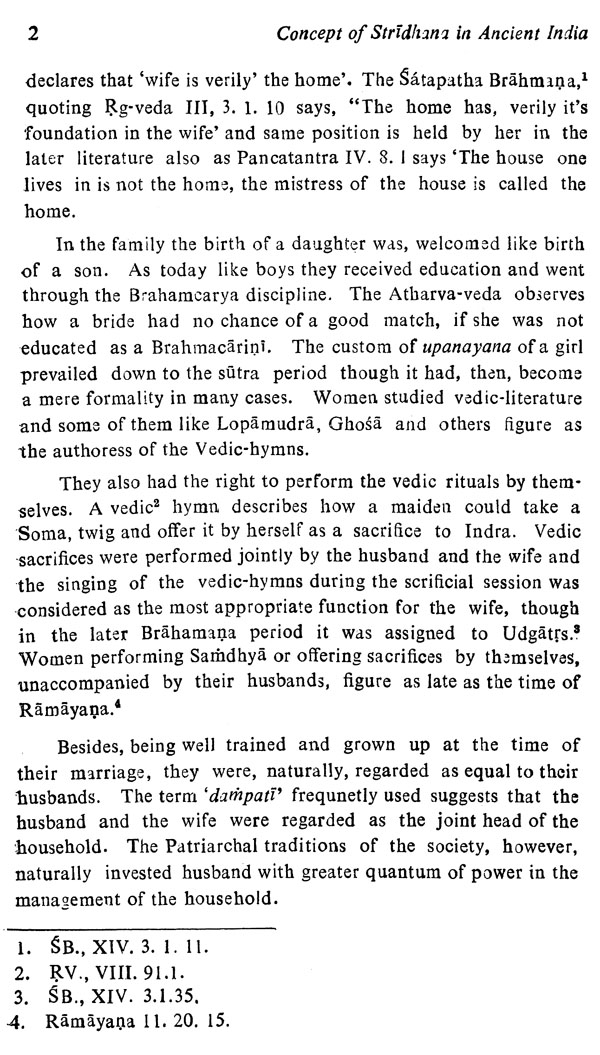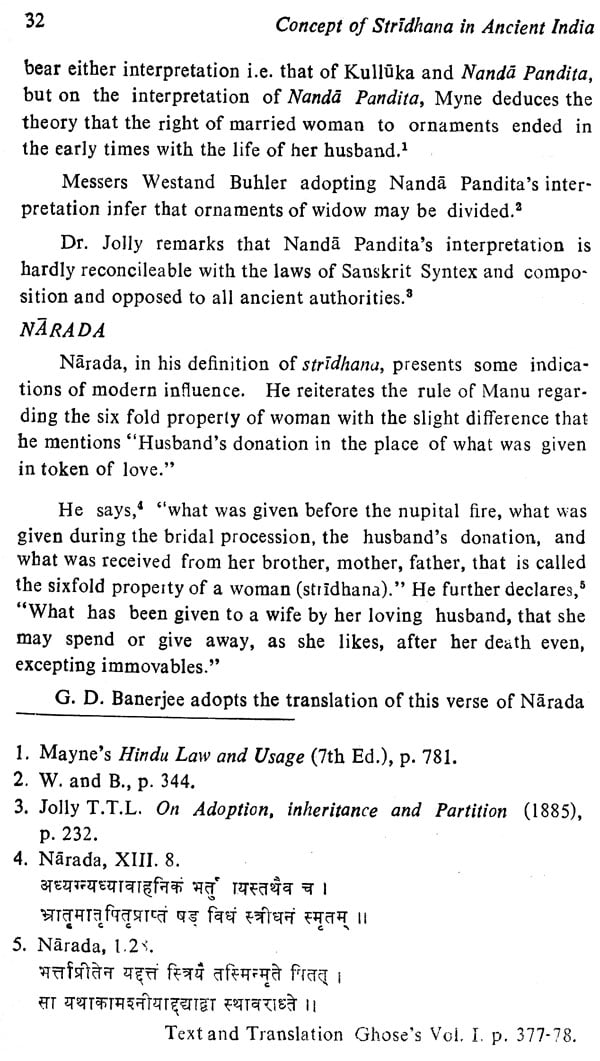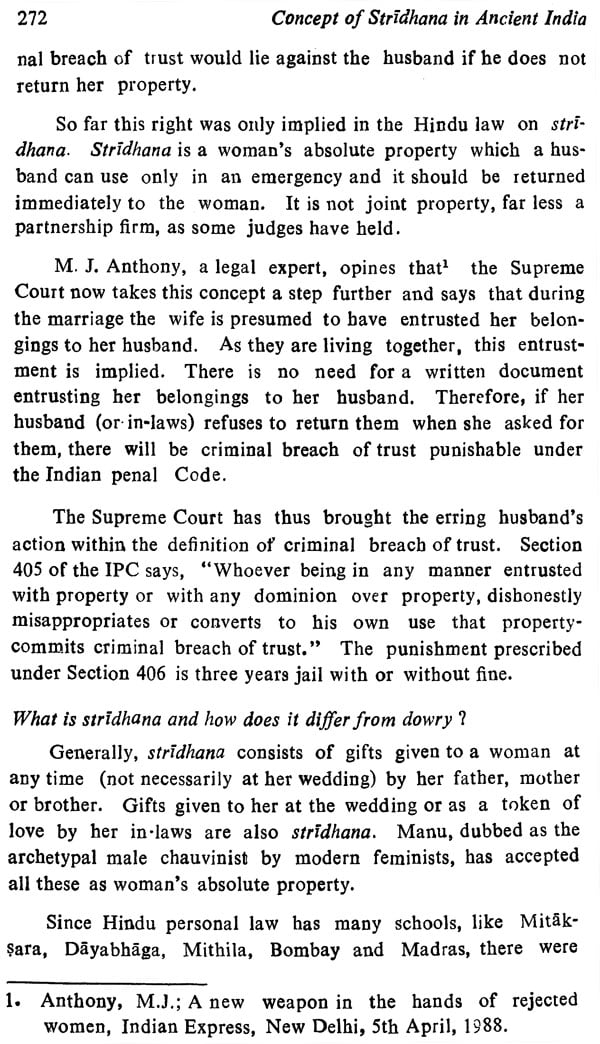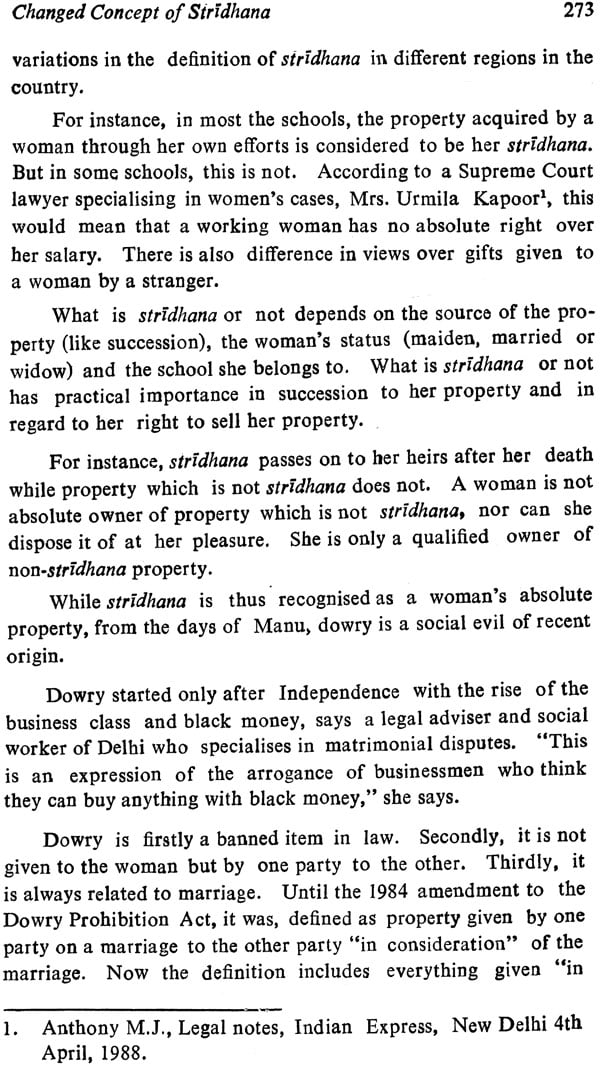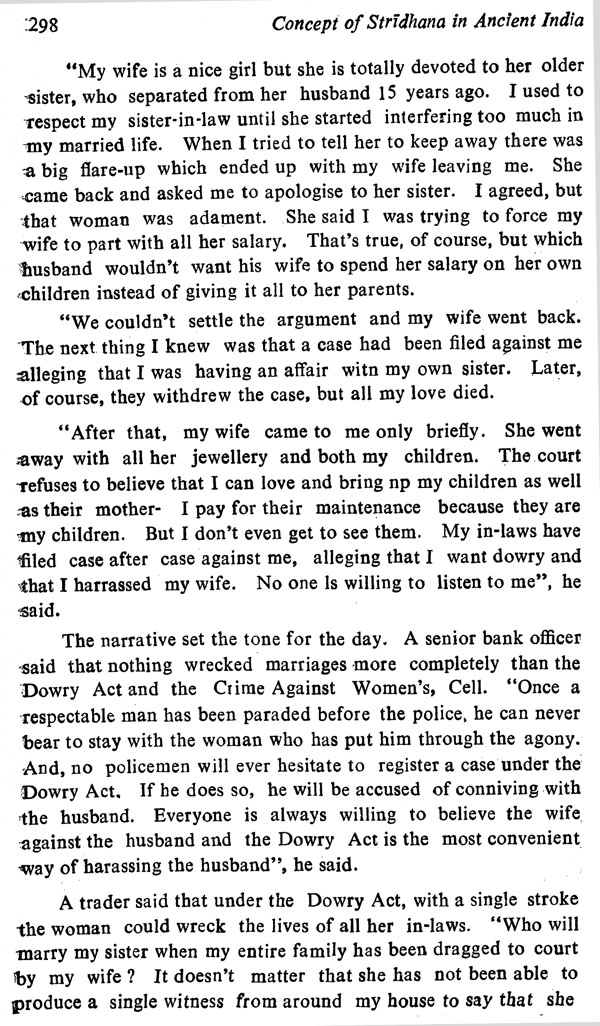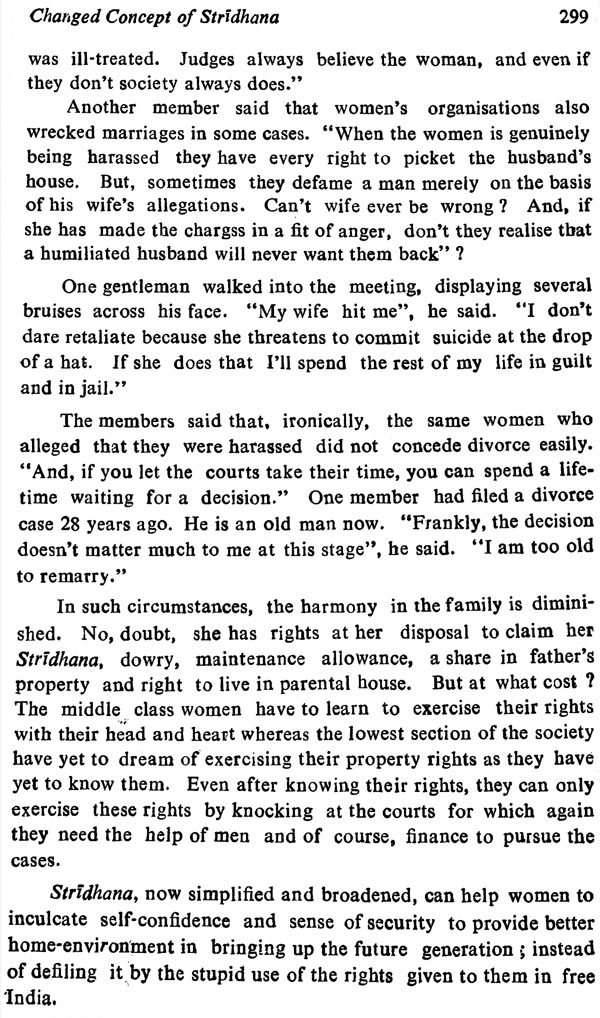
Concept of Stridhana in Ancient India
Book Specification
| Item Code: | NAU815 |
| Author: | Dr. Bhin Sain Narang |
| Publisher: | Parimal Publication Pvt. Ltd. |
| Language: | English |
| Edition: | 2020 |
| ISBN: | 9788171106684 |
| Pages: | 336 |
| Cover: | HARDCOVER |
| Other Details | 9.00 X 6.00 inch |
| Weight | 520 gm |
Book Description
In a society where patria-patestas still prevails, women have travelled a long but thorny way from being an object of moveable property to, to be the owner of property. Since women, through their scholastic, occupational and managerial credentials made their realisation felt in the Vedic era itself, the society began extending right of their ownership on certain gifts presented to the married girls on various occasions related to the marriage, which later on came to be recognised as Stridhana. Vijrianegvara, on the basis of the texts of Yajtiavalkyasmrti expanded the scope Stridhana and Jimatavahana expressly declared women's absolute ownership as an essential clause of the women's peculiar property. These two propounders of the Benaras and Bengal school respectively were supported by many commentators with marketable deviations which gave rise to the various schools in Hindu law.
With the passage of time, a good number of laws were passed to strengthen the economic position of women but the Hindu Succession Act, 1956 needs a special mention. Under the provisions of this Act, a daughter is an equal sharer of her parental property and is an absolute owner of stridhana.
What constitutes stridhana and how it devolves on her successors is the theme of this work. How can she execute her control over her stridhana? Why should man as husband not willingly return her dowry after disharmonious marital relations? Why should brother not allow her share in parental property without dissolution of relation? Some of these more relevant questions have been widely discussed in the present book.
This painstaking work deals with the rights of women, enshrined in the juristic and jurisprudential discourse of the classical Hindu Law. Dr. Bhim Sain Narang has an authentic. access to this discourse, and a sure grasp of deep-seated antinomies, and even contradictions, as regards the conceptions of Stridhana.
The reader stands rewarded with the profound play of her—meneutical approaches which underlie all juristic interpretations ; the genius of Jimatvahana, depicted here (in pages 68-82, but not only) provides, just one example of how original exegesis can transform the texts of tradition into instruments of justice. Indian. lawyers, judges and jurists, who have unfortunately lost over the. century, access to the diverse exubrance of Indian hermeneutics may find this book both stimulating and inspiring.
Overall, if my reading is tenable, the author, undoubtedly-deeply committed to the rights of women, wishes to make us alert. against any simple-minded, black and white, denunciation of the; classical Hindu jurisprudence as being anti-women. Certainly,. the diversity of 'schools' on Stridhana, so well overviewed in this. work, is enough to prohibit such a generalization at the threshold,. But the author goes further and locates even the pathbreaking: recent decision by the Supreme Court of India in Pratibha Rani case as reaffirming "the right of a woman to retain nuptial gifts-as enshrined in the ancient concept of Stridhana...first mooted by, the basic vedic sage Manu (p. 269).
In the present day atmosphere of easy polemic against,. or. faadamentalist dedication for, everything that is rooted or relatedi to religion, it would be only too easy to denounce this work as `revivalist' and 'obscurantist' or to hail it as a testament to friusduisms' just fidelity to women's rights. I believe, however, that importance lies in neither attribution. Rather, the work aatenation to the dynamism of a great civilizational discourses which formulates the problematic of women's right as a way of interrogating the excesses of ideology which may be harnessed for the dominant ends of patriarchy. Neither acclaim nor polemic would, at the end of the day, enable us to understand fully the terms of this discourse nor to revise them to achieve an enduring basis of reform. This, I believe, is the principal message of the present work.
Life long subjection was the condition of women according to the ancient law all over the world. This appears to have been due to destitution of strength and impulsive nature of the fair sex as well as due to two peculiar institutions common to most systems of archaic jurisprudence ; namely Patria Potestas—man's absolute and ultimate authority, and slavery, the latter of which has it's origion in the former.
Marriage also consisted only in transfer of deminion or Patria Potestas, from father to the husband to the extent that in Roman Law a wife was deemed to be a daughter of the husband for the purpose of Patria Potestas. On the death of father, the head of the family, however, a change took place in the condition of the son who become emanicipated and surf jurius and succeeded to the position of the deceased to become real master of the property. But the condition of the women, at first and of slaves, remained unchanged, there being only a change of masters.
The Vedic period has been the most advance, civilized and golden period of our society, hence frequent reference to the word 'dathpati' are found in the Vedic literature to suggest that husband and wife were regarded joint heads of the family. This shared headship, obviously gave an equal right of ownership over the household and other property to wife as the husband was required to take a solemn vow at the time of marriage that he will never usurp his wife's right in econ amic matters though this vow was not adhered to literally.
It is also true that with the passage of time, the intelligent wives, belonging to the upper section of the society, by virtue of their intetligent behaviour, occupational abilities and capabilities, and scholastic aptitute made their existence felt and they established that they, in no way, were inferior to men. Consequently, the society, though patriarch in nature and structure, accepted women's ownership on certain type of moveable propelty, mostly jewellary and other gifts given to her out of affection, at the time of marriage and at various occassions related to marriage. Hence there are casual references of women's separate property, in the Vedas itself which took a long period till sutra age of obtain a formal recognition and sanction.
**Contents and Sample Pages**
